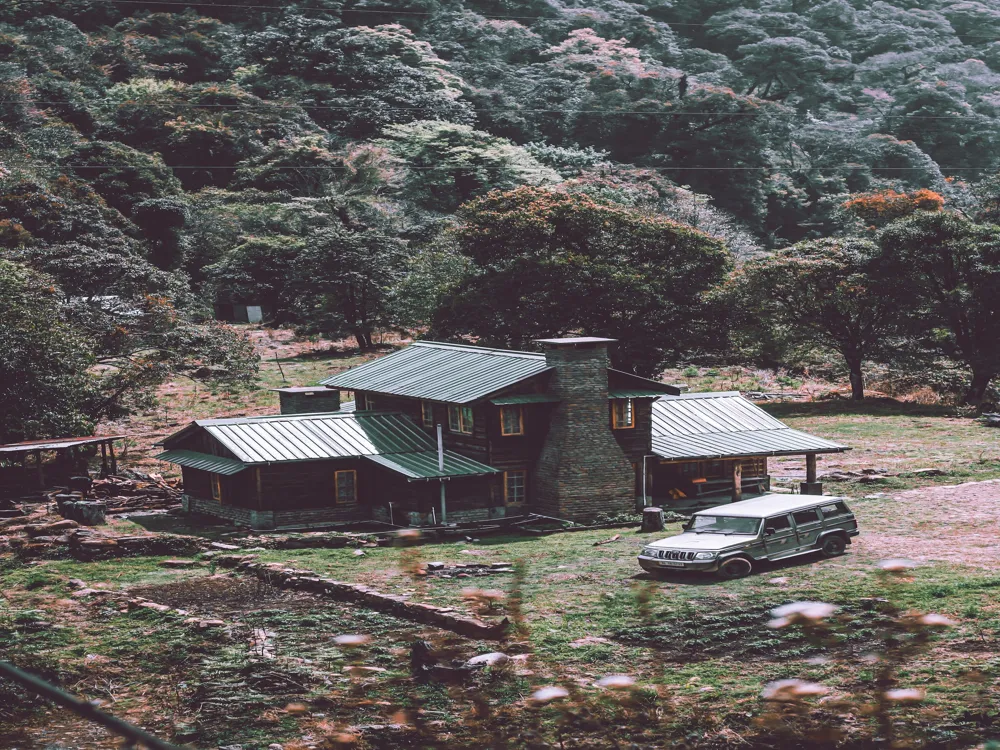Nestled in the heart of Jorhat, Assam, the Hoollongapar Gibbon Wildlife Sanctuary is a pristine natural habitat, famous for its lush greenery and diverse wildlife. Covering a modest area of about 20.98 square kilometers, this sanctuary is not only a haven for the Hoolock Gibbons but also shelters various other species, making it a significant ecological hotspot in the region. The sanctuary is renowned for its dense canopy of evergreen forests, predominantly composed of Hollong trees, after which it is named. These towering trees create a verdant overhead cover, allowing a unique ecosystem to thrive underneath. The sanctuary's flora is characterized by a mix of tropical wet evergreen forests, semi-evergreen forests, and bamboo groves, providing a haven for a multitude of species. Wildlife enthusiasts visiting the sanctuary can expect to encounter a rich biodiversity. Apart from the Hoolock Gibbons, the only apes found in India, the sanctuary is home to a variety of other species such as the stump-tailed macaque, capped langur, Indian elephant, leopard, jungle cat, Chinese pangolin, and several species of birds and reptiles. This diverse fauna is supported by the sanctuary's lush flora, which also serves as a crucial corridor for migratory species. The Hoollongapar Gibbon Wildlife Sanctuary not only plays a critical role in wildlife conservation but also contributes significantly to research and education. Its unique ecosystem offers ample opportunities for ecological studies and environmental education, making it a vital resource for conservationists and academics alike. The architectural aspect of Hoollongapar Gibbon Wildlife Sanctuary is not about man-made structures but the natural architectural marvels formed by its dense forests and diverse ecosystems. The sanctuary's layout is a testament to nature's ingenuity, with its complex network of flora and fauna coexisting in harmony. One of the most striking features of this sanctuary is its dense forest canopy, which forms a natural green roof over the entire area. This canopy is primarily composed of tall Hollong trees, intermixed with other species like Nahar, Amari, and Uriam. Underneath this canopy lies a multilayered understory, rich in biodiversity and serving as a critical habitat for various species. The sanctuary's terrain is relatively flat with some undulating areas, adding to its unique charm. Numerous small streams meander through the forest, providing a vital water source for the sanctuary's inhabitants and adding to the overall aesthetic appeal. These water bodies are often surrounded by lush undergrowth and serve as a gathering point for wildlife, offering visitors a chance to observe animals in their natural habitat. In addition to its natural architecture, the sanctuary includes minimal human-made facilities designed to blend seamlessly with the environment. These include observation towers, walking trails, and small resting areas, allowing visitors to immerse themselves in nature without causing significant disturbance to the wildlife. The ideal time to visit the sanctuary is between October to April, as the weather is pleasant and the wildlife is most active during these months. Always maintain a safe distance from the animals and avoid disturbing their natural behavior. Loud noises and sudden movements should be avoided to ensure a respectful wildlife viewing experience. Carry essentials like water, snacks, binoculars, a camera, and wear comfortable clothing suitable for jungle treks. It's also advisable to carry insect repellent and a first-aid kit. Opting for a guided tour can enhance your experience, as local guides are knowledgeable about the best spots for wildlife sightings and can provide valuable insights into the sanctuary's ecosystem. The sanctuary is accessible via road, rail, and air. The nearest town is Mariani, which is about 20 km away. Visitors can fly to the nearest airport, Jorhat, and then hire a taxi to reach the sanctuary. Mariani Junction is the closest railway station, well-connected to major cities. From Mariani, local transportation options like taxis and buses are available to reach the sanctuary. Read MoreOverview of Hoollongapar Gibbon Wildlife Sanctuary, Jorhat, Assam
Architecture of Hoollongapar Gibbon Wildlife Sanctuary
Tips When Visiting Hoollongapar Gibbon Wildlife Sanctuary
Best Time to Visit
Wildlife Viewing Ethics
What to Bring
Guided Tours
How To Reach Hoollongapar Gibbon Wildlife Sanctuary
Hoollongapar Gibbon Wildlife Sanctuary
Jorhat
Assam
₹ 6,000 onwards
View jorhat Packages
Jorhat Travel Packages
View All Packages For Jorhat
Top Hotel Collections for Jorhat

Private Pool

Luxury Hotels

5-Star Hotels

Pet Friendly
Top Hotels Near Jorhat
Other Top Ranking Places In Jorhat
View All Places To Visit In jorhat
View jorhat Packages
Jorhat Travel Packages
View All Packages For Jorhat
Top Hotel Collections for Jorhat

Private Pool

Luxury Hotels

5-Star Hotels

Pet Friendly






















